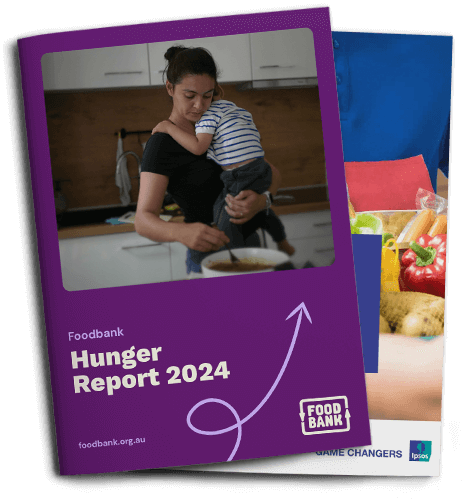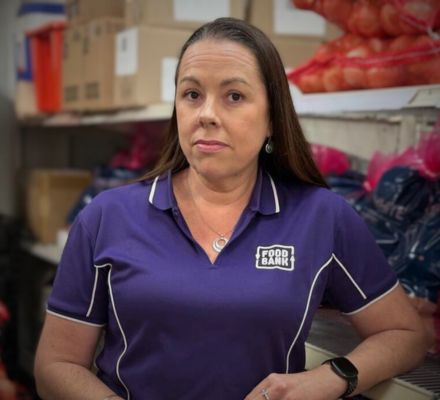
Food insecurity in Australia has reached a tipping point
This year’s Foodbank Hunger Report confirms that food insecurity in Australia has reached a critical point. Almost half of low-income households have faced food insecurity in 2024, the worst the situation has been since the cost-of-living crisis began.
A message from Brianna Casey AM, CEO, Foodbank AustraliaLow-income families, who were only just getting by, have now reached their limits. They are routinely skipping meals, compromising on the quality and nutrition of their food and going without personal care and household products. The struggles of single-parent households, people outside of metropolitan areas, and those relying on stagnant incomes paint a particularly grim picture, one where parents often go without food to protect their children from hunger.
More than half of food-insecure households are now at the severe end of the food insecurity spectrum. For these families, it’s not just about cutting back – it’s about missing meals entirely, sometimes for days. This is no longer a crisis of temporary hardship but a prolonged, systemic issue affecting millions of Australians. These households live with the daily anxiety of not knowing where their next meal will come from, forced to choose between essentials like food, housing and utilities.
This report highlights the growing divide between those who are able to absorb or adapt to rising costs and those being left behind. While some higher-income households have weathered the storm and come out the other side, households on the lowest incomes, $30,000 and less, are facing a reality that is becoming harder to escape. As we warned at the beginning of this crisis, low-income households were always going to suffer first, worst and for the longest, and the findings of this year’s report support this. We know recovery from the cost-of-living crisis will take years, not months, and we will continue to wrap our arms around our communities for as long as it takes, doing our part in getting nutritious, culturally appropriate food to as many food insecure households as possible.
Brianna Casey AM
Foodbank Australia CEO
Close panel
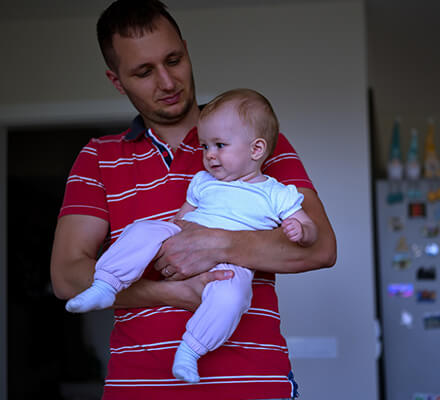
“The rise in cost of living has meant that everything has gone up dramatically, however, my pay has stayed the same. I have not been able to afford most things… I feel like I’ve failed as a parent because we are really struggling.”
Low-income households are reaching breaking point
Food insecurity amongst Australia’s lowest-income households (below $30,000) continues to grow (48%), up 5% since 2022 when the cost-of-living crisis first hit. Since then, these households have experienced a significant decline in their financial resilience, with many finding it increasingly difficult to meet basic living expenses. The socioeconomic divide is expanding as ‘Aussie battlers’ struggle to stay afloat.
Compounding economic effects, outside the control of Australia’s low-income households, are driving the vicious cycle of food insecurity. Inflation has caused steep rises to the prices of essential goods, particularly food, housing and utilities, with wages failing to keep pace. This gap forces many households to cut back on essentials like nutritious food. Additionally, global supply chain disruptions and the impacts of climate change on agriculture have increased prices, disproportionately affecting low-income households.
Stagnant wage growth, particularly in low-income sectors, means even full-time workers struggle to make ends meet. Income support payments, including Jobseeker and related payments, have not kept up with inflation, exacerbating the financial strain on those already living below the poverty line. Low-income households remain trapped in a cycle of deprivation with limited ability to recover or improve their situation. Many of Australia’s most vulnerable households risk being permanently left behind.
Close panel
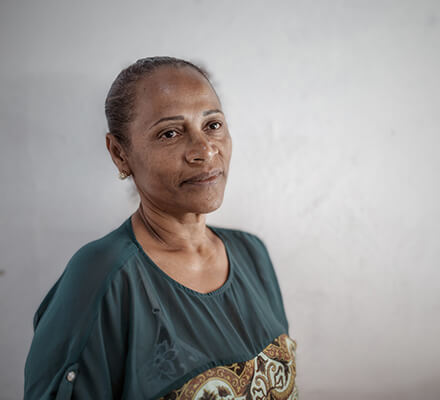
“I was paying all expenses for my son, his partner and children after they were hit by unemployment and losing their rental, but I was using up my reverse mortgage which was supposed to cover essential repairs and last me for a couple of years. We decided that the adults eat less so that the children weren’t affected. We are having one meal a day.”
More than half of food-insecure households in Australia are enduring the most severe level of hardship
This means they are often skipping meals, reducing portion sizes or even going entire days without eating.
More than half of all food insecure households in Australia (59%) are at the severe end of the food insecurity spectrum. This is 2 million households (2.3 million in 2023) in which people suffer disrupted eating patterns and reduced food intake such as skipping meals or going entire days without eating, sometimes to protect other members of their household.
Think of the experience of your household in the last 12 months, to what extent are each of the following true?
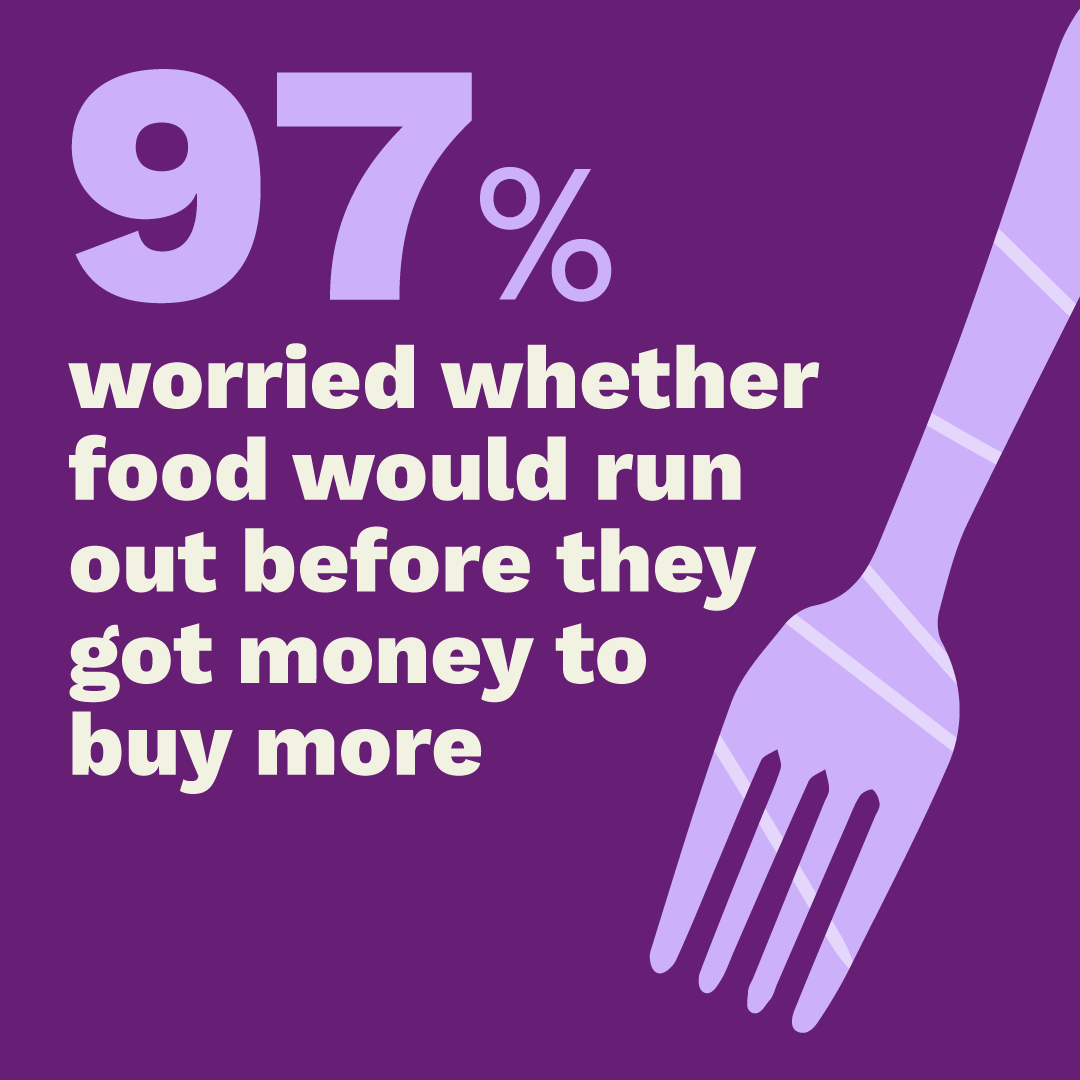
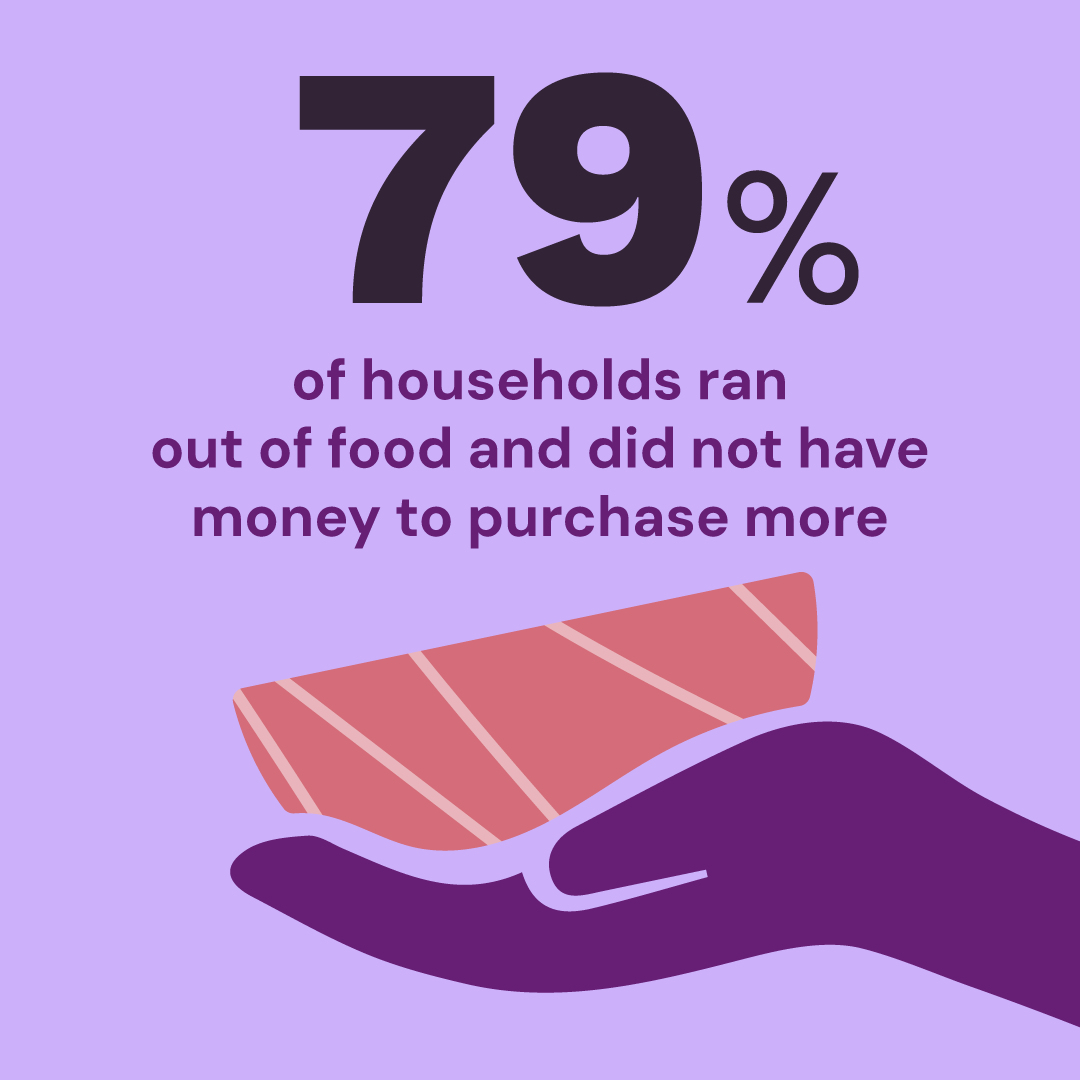
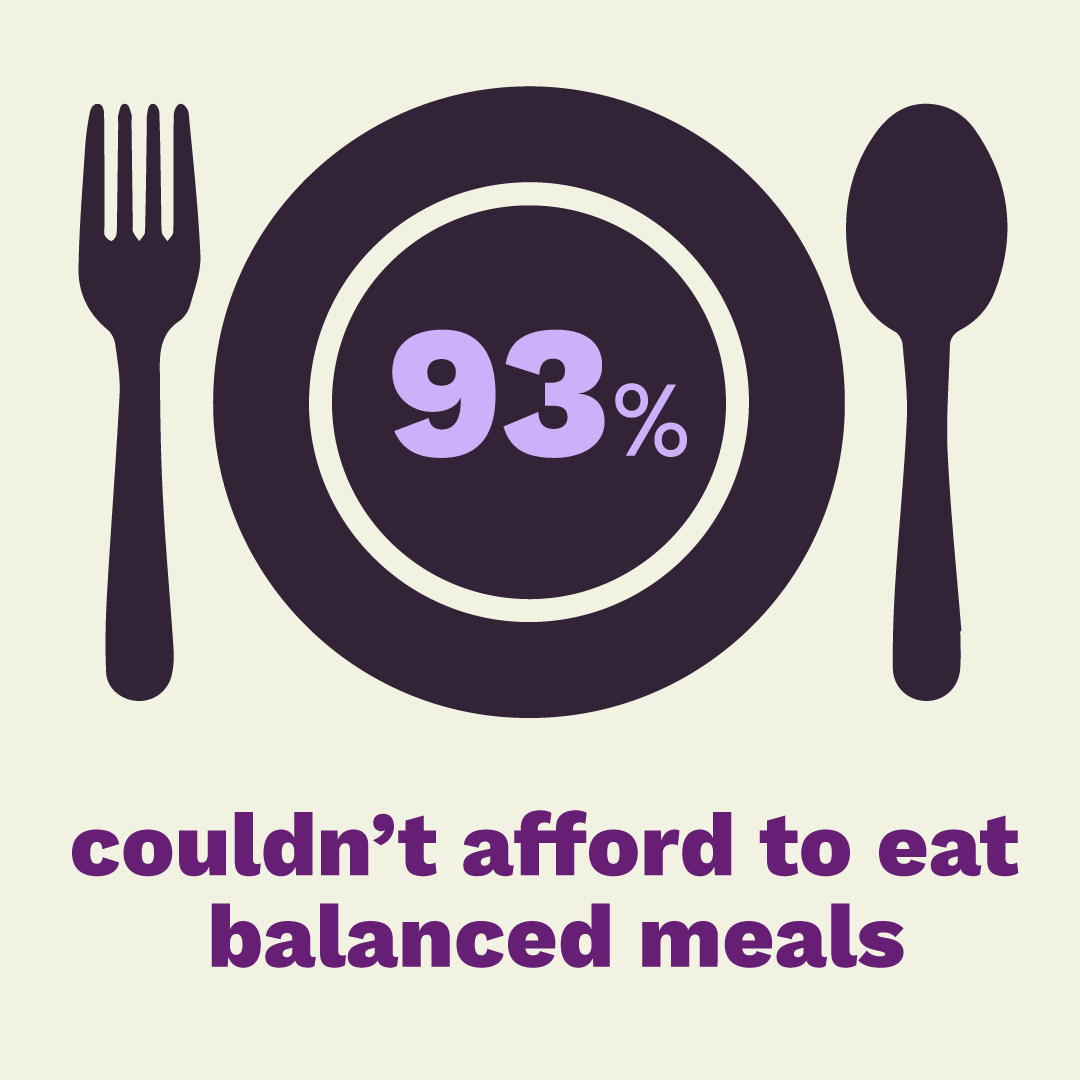
2024 has been extremely difficult for severely food insecure households, with stress and worry about food a constant concern. Almost all of them worry about not having enough money to buy more if food runs out (97%) or are not being able to afford balanced meals for themselves or their family (93%). An alarming 79% of severely food insecure households have actually seen their food run out without enough money to purchase more and half (50%) report adults not eating for whole days because they can’t afford food.
Close panel

“I just got out of a 7 year relationship and I had to leave my current job as I had to leave my house that I couldn’t afford the rent by myself. So I moved to my Dad’s and it took over 4 months for Centrelink to process my application and my Dad lives out of town so it makes it very hard to be able to find a job I can get to every day.”
Low-income households continue to experience historically high levels of food insecurity
In contrast, higher-income households are beginning to see signs of improvement.
Almost a third of all Australian households (32%) experienced some form of food insecurity (moderate to severe) at a point in the past 12 months. This means 3.4 million households have at the very least reduced the quality, variety or desirability of their food and at worst, run out of food so that household members go entire days without eating. This is a slight improvement on the overall rate of food insecurity in 2023 which was 3.7 million households (36%), but the situation has deteriorated for many households with deeply concerning pockets of hardship at historically high, or worsening, levels of food insecurity.
Almost half (48%) of those households living on less than $30,000 a year are now food insecure, up 5% since 2022 when the cost-of-living crisis first hit.
Single-parent households are facing a particularly alarming rate of hardship, with 69% facing food insecurity in the past 12 months, 41% reporting that it is severe. This is trending up (67% in 2023) contrary to two-parent households, where food insecurity decreased this year to 35% from 45% in 2023.
Food insecurity is being felt more acutely in the regions (37%) compared to metropolitan areas (30%).
Households with an annual income of over $95,000 report doing better this year compared to 2023. Unlike those in lower income brackets, the proportion of food insecure households dropped to 21% in 2024, down 7% on 2023.
Close panel

“The current cost of living has severely impacted me as a single mother who works full time but does not receive any child support from my former partner. One income only is no longer affordable since Covid for a single-parent family to live off with the increased fuel, energy, insurance, rent, food and daily cost of living expenses. I often go without food and necessities to make sure my children don’t go without.”
Australian households navigate the pressures of rising living costs by cutting back or relying on credit
Australian households continue to mitigate cost-of-living pressures by trying to save on everyday essentials such as food, groceries and energy use. Practical measures such as planning meals ahead of time and reducing spending on eating out are being taken, but more significant compromises and sacrifices are also being made in households experiencing severe food insecurity.
Households experiencing severe food insecurity are considerably more likely to reduce purchasing of essentials such as dairy products, fresh produce and protein. They are also more likely to cut back on cleaning or personal care products and other household items.
Another coping strategy is to rely on credit cards or Buy-Now-Pay-Later services to defer payments. This reliance on debt products to make ends meet by the most food insecure households further threatens their ability to ever recover financially.
Managing Cost-of-Living Pressures
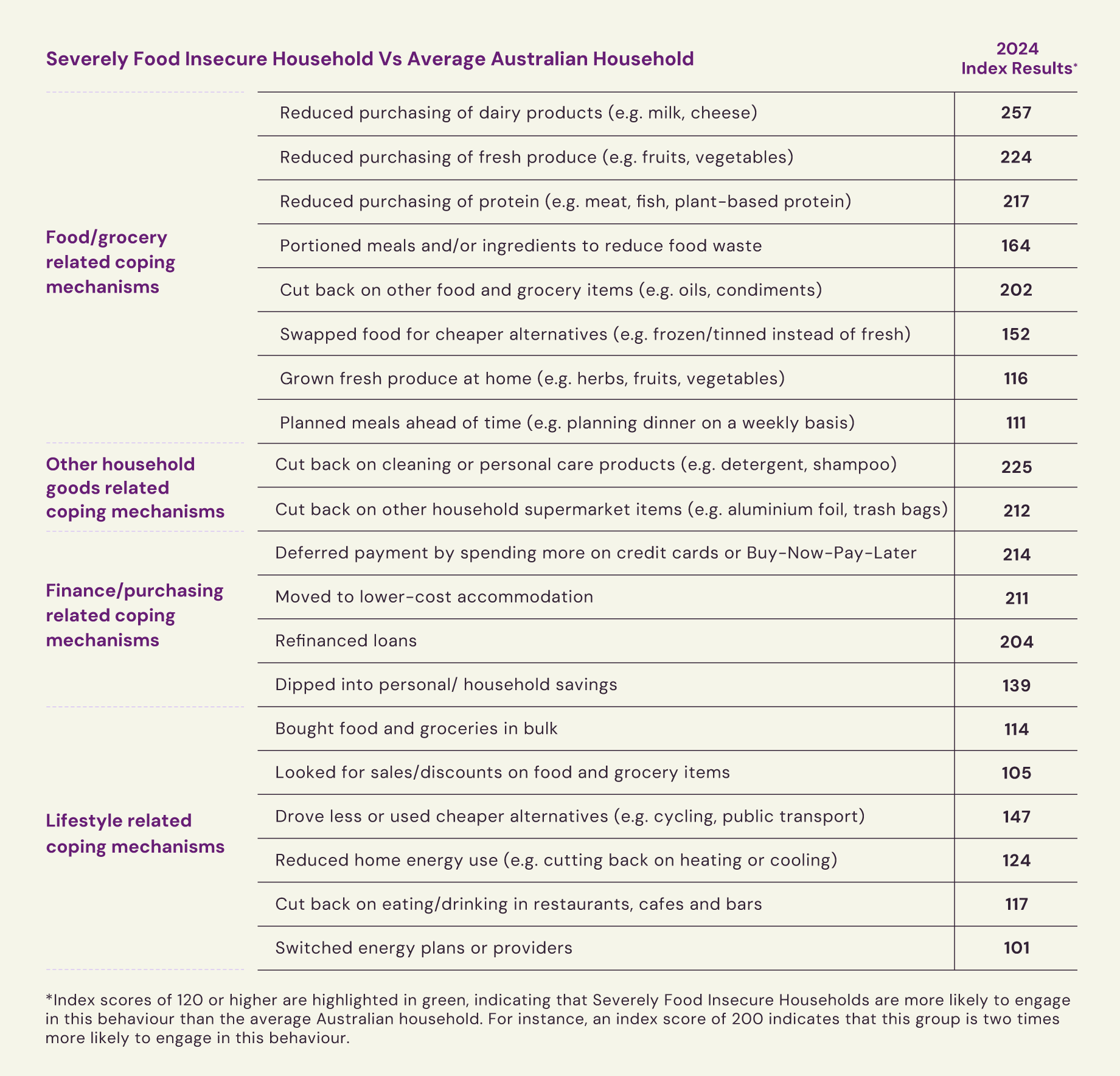
Close panel
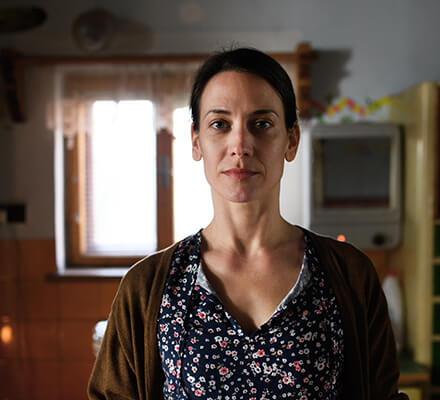
“The last time we could not afford enough food for ourselves I portioned the food we had and ate reduced serving sizes. I also supplemented what I could with home grown items.”
Charities across Australia are grappling with surging demand for food relief
Food relief charities are continuing to experience heightened demand, not only because of ongoing need in the community, but also due to an increasing awareness amongst those in food insecure households of where to seek support (47%, up 12% on 2023).
26% of food insecure households have accessed formal food relief in the past 12 months, up from 24% in 2023. This increase has been driven by those who are severely food insecure, 30% of whom have accessed help in 2024 vs 26% in 2023.
Additionally, over half (53%) of food insecure households reported they are receiving food relief more often (either much more or somewhat more) than a year ago.
The situation has become more desperate for many because family and friends, an important support net in the past, are now unable to help as they’re under strain themselves. Increasingly family and friends are no longer in a position to help fill the gap with only a quarter of food insecure households (25%) now receiving this help, down from a third (32%) in 2023. This makes the role of food relief organisations even more essential.
Close panel

“Fortunately I live near a neighbourhood house that has community pantry options so you can go daily and collect like a muffin for brekky, pizza roll pastry and piece of fruit for lunch, pull apart loaf and veggies and noodles to make soup etc. Once a week you get hot meals, two per family member, pre-frozen – usually a roast and curried sausages or similar.”
Methodology
Read the details hereThis report presents key findings from the Foodbank Hunger Report 2024 research which was conducted between 29 July – 16 August 2024, through an online survey of 4,260 Australians aged 18 years or older. The sample was nationally representative by age, gender and location (capital city / rest of state) in each major state, with stratified quotas to ensure all major states have a robust minimum sample size of n=600 or above.
All 4,260 Australians answered up to 18 questions in the United States Department of Agriculture Household Food Security Survey Module (HFSSM) for measurement of the prevalence of household food security over the 12 months ending 16 August 2024.
A total of 1,278 respondents (32%) were identified through the HFSSM as being from moderately and severely food insecure households. This group continued to answer a deep dive module about their experience living with food insecurity over the last 12 months.
Close panel
Foodbank Australia would like to thank the following, without whom the Foodbank Hunger Report would not be possible:
The individuals who shared their lived experience in the Foodbank Hunger Report Survey, providing insights into the challenges they face in meeting their daily food needs. Please note all images associated with quotes are stock photos.
The hard-working state and territory Foodbanks who are always prepared to take time from their vital work to respond to our requests for feedback and on-the-ground intelligence and observations.
IPSOS for undertaking the Foodbank Hunger Report Survey and providing detailed analysis of this and other sources of data to provide the basis for this report.
Russell Moverley for the design of the report.
The Australian Government Department of Agriculture, Water and Environments’ financial contribution via the End Food Waste Australia project: Enhancing Foodbank’s stakeholder engagement.
This report may be quoted for the purposes of research, discussion, record keeping, educational use and other public benefit, provided that such reproduction acknowledges Foodbank Australia.
Foodbank Australia Limited
ABN 58 073 579 254 +61 2 9887 4144 admin@foodbank.org.au foodbank.org.au
Facebook: https://www.facebook.com/FoodbankAus
Twitter: https://twitter.com/FoodbankAus
LinkedIn: https://au.linkedin.com/company/foodbank-australia
Instagram: https://www.instagram.com/foodbankaus
YouTube: https://www.youtube.com/user/FoodbankAustralia
Close panel
